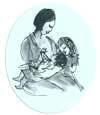|
|
|||||||||||||||||||||||||||||||||||||||||||||||||||
|
|
|
||||||||||||||||||||||||||||||||||||||||||||||||||
|
2007 Assisted Reproductive Technology Success Rates:
Preliminary Data |
|
|
Reproductive Health and novel H1N1 Flu CDC is concerned about women and their families when there are either threats from disease or disasters. This includes women who may be pregnant, who have recently been pregnant, may be trying to conceive, or who are considering reproductive health treatments.
Pregnant
Women Are More Severely Impacted by Novel H1N1
Influenza Virus and Need Prompt Treatment
with Antiviral Medication |
|
 |
Sexual and Reproductive Health of Persons Aged 10–24
Years, United States, 2002–2007
Contraceptive Use Among Postpartum Women—12 States and New York
City, 2004—2006 |
|
 |
Making
Methods and Practice Matter for Women,
Children and Families MCH EPI Conference, Tampa, Florida Pre-Conference Trainings: December 7–8, 2009 Grand Hyatt Tampa Bay Conference: December 9–11, 2009 |
|
* |
Links to non-Federal organizations found at this site are provided solely as a service to our users. These links do not constitute an endorsement of these organizations or their programs by CDC or the Federal Government, and none should be inferred. The CDC is not responsible for the content of the individual organization Web pages found at these links. |
|
|
|
To learn more about PDF
|
|
|
||||||||||||
|
|
||||||||||||
|
||||||||||||
|
|
||||||||||||
|
|
|
|
|
|
|
PRAMS A surveillance project of CDC and state health departments. PRAMS collects state-specific, population-based data on maternal attitudes and experiences prior to, during and immediately following pregnancy.
|
|
|
|
|
|
|
|
|
|
|
| CDC/DRH 4770 Buford Hwy, NE MS K-20 Atlanta, GA 30341-3717 Call: 1 (800) CDC-INFO |
|
|
|
|
|
|
|
|
|
||||||||||||
|